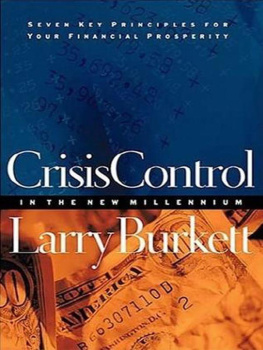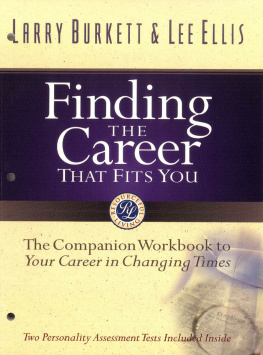Andrew Burkett - Romantic Mediations
Here you can read online Andrew Burkett - Romantic Mediations full text of the book (entire story) in english for free. Download pdf and epub, get meaning, cover and reviews about this ebook. City: New York, year: 2016, publisher: State University of New York Press, genre: Romance novel. Description of the work, (preface) as well as reviews are available. Best literature library LitArk.com created for fans of good reading and offers a wide selection of genres:
Romance novel
Science fiction
Adventure
Detective
Science
History
Home and family
Prose
Art
Politics
Computer
Non-fiction
Religion
Business
Children
Humor
Choose a favorite category and find really read worthwhile books. Enjoy immersion in the world of imagination, feel the emotions of the characters or learn something new for yourself, make an fascinating discovery.
- Book:Romantic Mediations
- Author:
- Publisher:State University of New York Press
- Genre:
- Year:2016
- City:New York
- Rating:4 / 5
- Favourites:Add to favourites
- Your mark:
- 80
- 1
- 2
- 3
- 4
- 5
Romantic Mediations: summary, description and annotation
We offer to read an annotation, description, summary or preface (depends on what the author of the book "Romantic Mediations" wrote himself). If you haven't found the necessary information about the book — write in the comments, we will try to find it.
Romantic Mediations — read online for free the complete book (whole text) full work
Below is the text of the book, divided by pages. System saving the place of the last page read, allows you to conveniently read the book "Romantic Mediations" online for free, without having to search again every time where you left off. Put a bookmark, and you can go to the page where you finished reading at any time.
Font size:
Interval:
Bookmark:

SUNY SERIES , S TUDIES IN THE L ONG N INETEENTH C ENTURY
Pamela K. Gilbert, editor

M EDIA T HEORY AND
B RITISH R OMANTICISM
ANDREW BURKETT

Cover illustration: Kim Keever, Sunset 44d , 2007, chromogenic color print.
Courtesy of Kim Keever and Kinz + Tillou Fine Art, Brooklyn, New York.
Published by
STATE UNIVERSITY OF NEW YORK PRESS
Albany
2016 State University of New York
All rights reserved
Printed in the United States of America
No part of this book may be used or reproduced in any manner whatsoever without written permission. No part of this book may be stored in a retrieval system or transmitted in any form or by any means including electronic, electrostatic, magnetic tape, mechanical, photocopying, recording, or otherwise without the prior permission in writing of the publisher.
For information, contact
State University of New York Press
www.sunypress.edu
Production, Laurie D. Searl
Marketing, Kate R. Seburyamo
Library of Congress Cataloging-in-Publication Data
Names: Burkett, Andrew, 1977 author.
Title: Romantic mediations : media theory and British romanticism / Andrew Burkett.
Description: Albany : State University of New York Press, 2016. | Series: SUNY series, Studies in the long nineteenth century | Includes bibliographical references and index.
Identifiers: LCCN 2016007709 (print) | LCCN 2016020088 (ebook) | ISBN 9781438463278 (hardcover : alk. paper) | ISBN 9781438463261 (pbk. : alk. paper) | ISBN 9781438463285 (e-book)
Subjects: LCSH: RomanticismGreat Britain. | English literature18th centuryHistory and criticism. | Mass media and literatureGreat BritainHistory18th century.
Classification: LCC PR447 .B77 2016 (print) | LCC PR447 (ebook) | DDC 820.9/145dc23
LC record available at https://lccn.loc.gov/2016007709
10 9 8 7 6 5 4 3 2 1
In loving memory of Julia Elise Gregory, our bright star
One of the many meanings of mediation is to intervene, and the various interventions and other mediations set forth in the pages that follow would have been impossible without the extremely kind and generous support of so many people. Although I was certainly unaware of it at the time, this book began more than a decade ago while I was still a doctoral student working under the supervision of both Robert Mitchell and Thomas Pfau at Duke University. These two brilliant and inimitable scholars, who have remained my compassionate mentors and dear friends through the years, in so many various ways helped me first to articulate and develop my interests and arguments concerning the intersections among technology, science, and imaginative literature during the British Romantic period. Indeed, I have been exceptionally lucky in my first mentors in Romanticism, and I thank both Rob and Thomas immensely for their inexhaustible intellectual guidance and support over the years.
I first began writing portions of this book at Wake Forest University, where Jessica Richard, a close and careful listener and an astute and encouraging reader, helped me to envision and draft an early version of my chapter on Mary Wollstonecraft Shelley, and it is a privilege to acknowledge Jessica for her inspiration and advice and especially for her friendship as my work took shape. Other past and current members of the Wake Forest community provided motivation and counsel for me as I embarked on this study. Bruce Barnhart, Anne Boyle, Margaret Ewalt, Susan Harlan, Omaar Hena, Jefferson Holdridge, Grant McAllister, Kathleen McClancy, Randi Saloman, and Eric Wilson have assisted in many different ways, and I thank them all.
Friends and colleagues at Union College, where I composed the vast majority of the present study, have brought me riches and have proved to be instrumental in my research and writingencouraging me along with care and kindheartedness as I have worked to complete this project. I am especially grateful for the scrupulous observations and profound insights provided by Claire Bracken, Kara Doyle, Bernhard Kuhn, Judith Lewin, Jim McCord, and David Ogawa, all of whom read and commented on large portions of this text. Other members of my companionable community at Union have offered invaluable suggestions and have cheered me on in my work, and I owe a great deal to conversations and collaborations that Ive had with Valerie Barr, Charles Batson, Kristin Bidoshi, Palmyra Catravas, Michelle Chilcoat, Lorraine Cox, Andrew Feffer, Megan Ferry, William Garcia, Christine Henseler, Hugh Jenkins, Katherine Lynes, Seyfollah Maleki, Lori Marso, Harry Marten, Victoria Martinez, Andrew Morris, Daniel Mosquera, Jillmarie Murphy, Erika Nelson, Stacie Raucci, John Rieffel, April Selley, Jordan Smith, Ruth Stevenson, Jenelle Troxell, Bunkong Tuon, Patricia Wareh, Nick Webb, and Brenda Wineapple. Additionally, I would be remiss without extending my warmest thanks to a number of staff members from Unions Department of English, Schaffer Library, and Information Technology Services, and I am particularly appreciative of the thoughtful assistance that I received from Annette LeClair, Frances Maloy, Diane Nebolini, Robyn Reed, India Spartz, Kesheng Yu, and Raik Zaghloul. I am also very thankful not only for Unions institutional support, which included a junior faculty research sabbatical that allowed me to finish this project, but also for the Colleges material aid of this book through a range of fellowships and grants, such as the Andrew W. Mellon Foundation Our Shared Humanities Grant, the Humanities Faculty Research Fellowship, and the Internal Education Foundation Grant.
I have benefitted greatly as well from a selfless community of scholars in nineteenth-century studies who have provided commentary on myriad versions of this project in one way or another over the past half decade: special thanks here to Alan Bewell, James Brooke-Smith, Mark Canuel, Katey Castellano, David Collings, Noah Comet, Joel Faflak, Neil Fraistat, Geraldine Friedman, Evan Gottlieb, Nathan Hensley, Yohei Igarashi, Noel Jackson, Kir Kuiken, Joshua Lambier, Celeste Langan, Kirstyn Leuner, Mark Lussier, Tom Mole, Jonathan Mulrooney, Lauren Neefe, Peter Otto, Emma Peacocke, Brian Rejack, Christopher Rovee, John Savarese, Kate Singer, Karen Swann, Sophie Thomas, Orrin Wang, and Paul Yoder. I have learned a tremendous amount from Roger Whitson, who read numerous sections of this text at often inconvenient times and provided probing questions and insightful comments and suggestions for revision that have crucially helped me in the writing process. I could not have completed this study without this inspiring and engaging company of allies in the field.
I am extremely grateful to Amanda Lanne-Camilli, my editor at the State University of New York Press, as well as to Pamela K. Gilbert, Jessica Kirschner, and James Peltz for carefully and efficiently shepherding this book through the publication process from start to finish. Two anonymous readers for SUNY Press provided me with incisive and truly valuable reports that significantly shaped the language and ideas of the final version of this text. I also owe a special debt to a number of individuals, galleries, museums, and institutes for allowing me to reproduce the range of images that appear in the chapters that follow, and I extend my special thanks to the following: the British Film Institute (BFI Stills); Robert N. Essick; The J. Paul Getty Museum, Los Angeles; Kim Keever and Kinz + Tillou Fine Art, Brooklyn, New York; Dr. Walter Knysz, Jr.; Hans P. Kraus, Jr., New York; Julie Lohnes; National Media Museum (Bradford)/Science & Society Picture Library; Michael Phillips; Doug Simpson; Joseph Viscomi and the William Blake Archive; and the Yale Center for British Art, Paul Mellon Collection. Additionally, portions of this book previously appeared in several journals. An earlier version of ; David Amigoni and John Wiley & Sons Ltd; and Charles Rzepka and the Trustees of Boston University.
Font size:
Interval:
Bookmark:
Similar books «Romantic Mediations»
Look at similar books to Romantic Mediations. We have selected literature similar in name and meaning in the hope of providing readers with more options to find new, interesting, not yet read works.
Discussion, reviews of the book Romantic Mediations and just readers' own opinions. Leave your comments, write what you think about the work, its meaning or the main characters. Specify what exactly you liked and what you didn't like, and why you think so.













